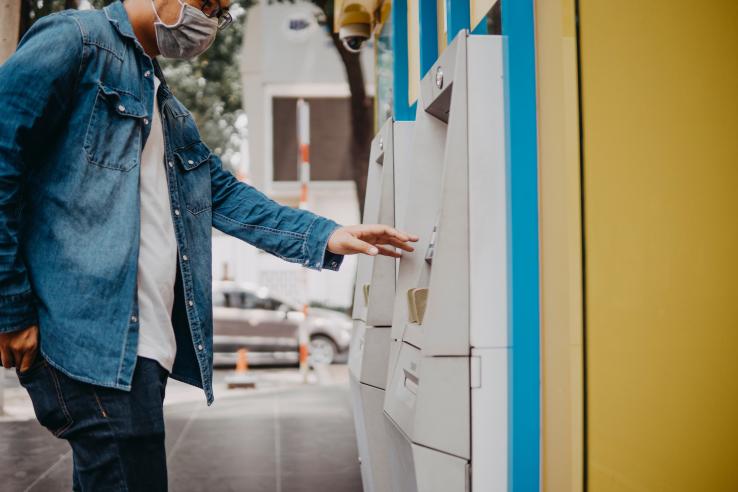
BAE Incubator partner series, part one: Evaluating the impact of cash transfers on housing stability

Homelessness in the United States is a pressing issue that requires increased research on effective strategies to address it and encourage long-term housing stability. The Bay Area Evaluation (BAE) Incubator supports Bay Area service providers with implementing and evaluating cash transfer programs to assess their impact on homelessness and housing stability. In part one of our BAE Incubator partner series, we explore existing evidence on cash transfers and highlight the need for further evaluation in the context of homelessness reduction and prevention in the United States. Subsequent blog posts showcase the experiences of BAE partners, such as Compass Family Services, Abode Services, and Hamilton Families.
Homelessness in the United States
Nearly 600,000 people in the United States experience homelessness on a given night, according to 2020 data from the Department of Housing and Urban Development, the highest measured since 2013. The Covid-19 pandemic has greatly impacted the way people experience homelessness and housing instability by further stretching the resources of many individuals and families.
Structural discrimination and systemic factors place certain groups at higher risk of experiencing homelessness. Black people and other communities of color, members of the LGBTQ community, people with severe mental illness, survivors of domestic violence, veterans, and other marginalized communities are disproportionately affected by homelessness and housing instability. Housing instability can take many—often uncounted—forms, including living with friends, switching between different forms of temporary housing, or struggling with eviction.
Due to the complexity and variety of ways people experience homelessness, there are many different approaches that aim to tackle this issue. While rigorous evidence has pointed to several promising solutions, additional research is needed to identify and strengthen ways to help people maintain safe and stable housing. With the US federal budget totalling around $7.2 billion annually to prevent homelessness and housing instability, it is critical to evaluate promising programs and examine evidence when allocating funds.
The promise of cash transfers
Traditional methods of support for those experiencing or at risk of homelessness have come in the form of rental assistance, transitional housing, and emergency services such as shelters. In the past few decades, the Housing First approach—which prioritizes immediate housing without preconditions—has become a popular model of assistance, in part due to evidence highlighting its effectiveness compared to traditional shelter-based approaches.
Recently there has been increasing interest in cash transfers as a method to reduce homelessness. Cash transfers often come in two forms: conditional or unconditional. Conditional cash transfers provide monetary assistance on the condition that recipients make certain investments, often in education and health. Unconditional cash transfers provide money to people directly to spend in the way recipients consider most appropriate. This unconditionality not only removes paternalistic oversight that can come with other programming, but also returns autonomy and decision-making ability to the recipient.
Cash transfers have typically been studied in low- and middle-income countries. Although they have demonstrated encouraging outcomes like increasing economic and psychological well-being, physical health, and household purchasing power, there is less evidence of their impact in high-income contexts.
In the past few years, several ongoing pilot studies have emerged that seek to address this gap in knowledge by evaluating cash transfer programs in high-income countries such as the United States. The evidence in this context indicates that cash transfer programs have promising effects, especially in relation to financial stability, health, employment, and wellbeing. More recently, the J-PAL funded Baby’s First Years study showed that unconditional cash gifts to low-income mothers resulted in changes in their infants’ brain activity.
Limited evidence on cash transfers to address homelessness in the United States
Although initial studies of cash transfers show promising results for financial stability and health, only a few studies have assessed their impact on homelessness and housing stability specifically.
Results from two quasi-experimental evaluations in England and the United States illustrate that providing financial assistance to individuals experiencing or at risk of homelessness is associated with greater moves into permanent housing and lower rates of shelter entry. A randomized evaluation in Canada found that a one-time cash transfer to individuals experiencing homelessness led to them moving into stable housing faster and spending fewer days unsheltered.
Additionally, there are a few ongoing randomized evaluations on cash transfers and homelessness taking place in cities across the United States that will further contribute to the evidence base once completed.
Despite preliminary evidence in the field, evaluations with larger sample sizes, varied payment methods and cadences, diverse populations (e.g., adults, youth, and families), and different contexts are still needed to build up a rigorous evidence base that can inform policy decisions.
Generating new evidence on cash transfers and homelessness in the Bay Area
In order to expand the causal evidence base on the impact of cash transfers on homelessness, J-PAL North America is partnering with several homeless service providers in the California Bay Area to bolster their knowledge and capacity to design and implement randomized evaluations of cash transfer programs. The California Bay Area has the third largest population of people experiencing homelessness of any metropolitan area in the United States and this number has continued to increase over the last several years. These partnerships are an opportunity to explore whether cash transfers, paired with existing services, can combat homelessness in a setting that urgently requires comprehensive responses.
J-PAL North America is dedicated to advancing high-quality research and identifying effective strategies to reduce and prevent homelessness and encourage long-term housing stability in the United States. Our homelessness and housing stability team partners with organizations to raise policy-relevant research questions; strengthens organizational capacity to design and implement randomized evaluations; and generates, synthesizes, and utilizes evidence on innovative programs. Organizations and researchers interested in using rigorous impact evaluations to answer policy questions related to cash transfers or other housing-focused programs can read more about our work, subscribe to our Homelessness Reduction and Prevention Initiative newsletter, or contact Bridget Mercier, J-PAL North America’s policy and training manager, for more information.
Related Content

Reducing and Preventing Homelessness: Lessons from Randomized Evaluations

Using cash transfers to improve child health in low- and middle-income countries


